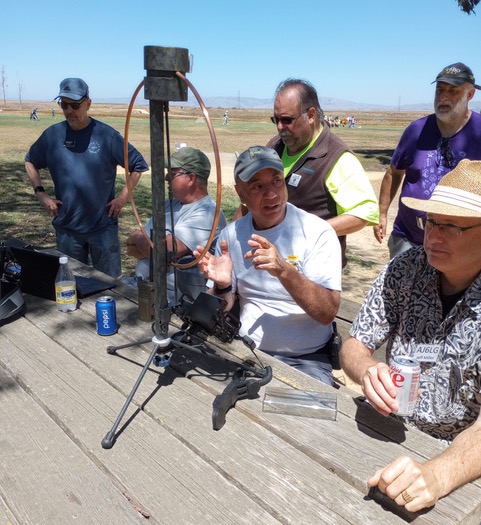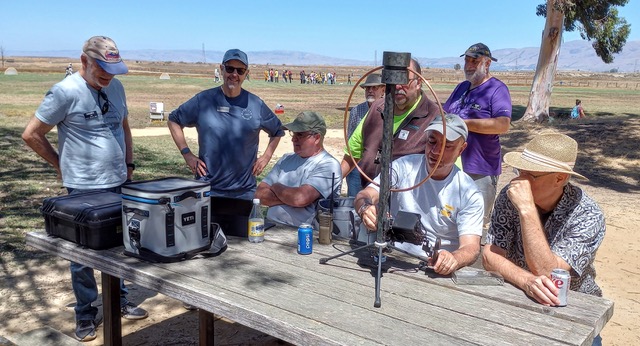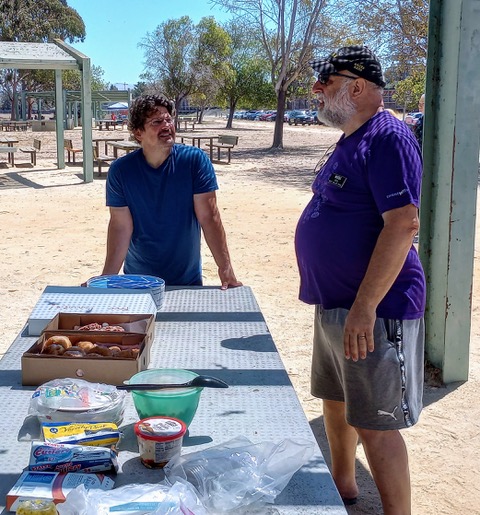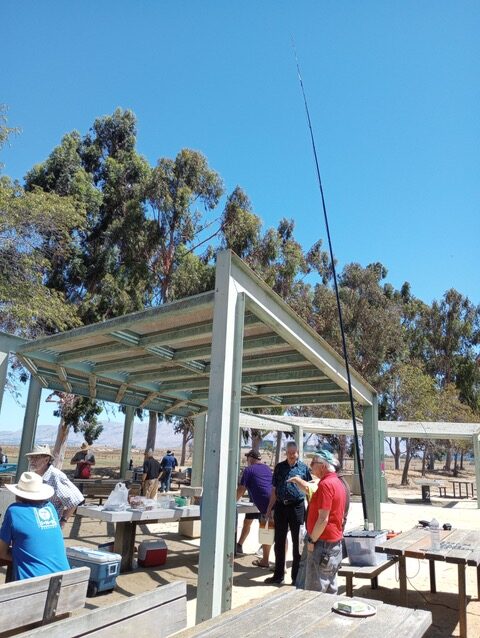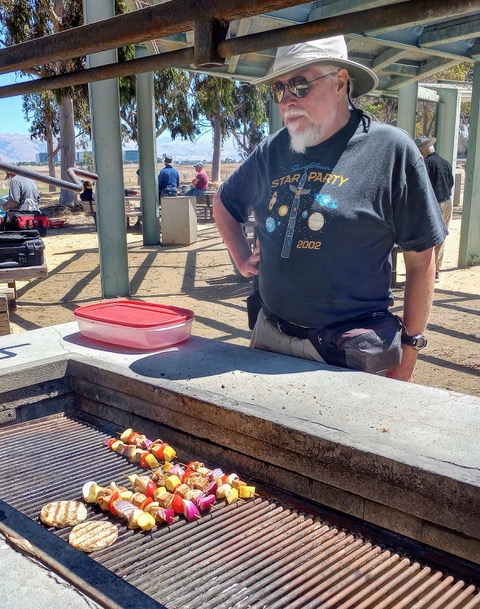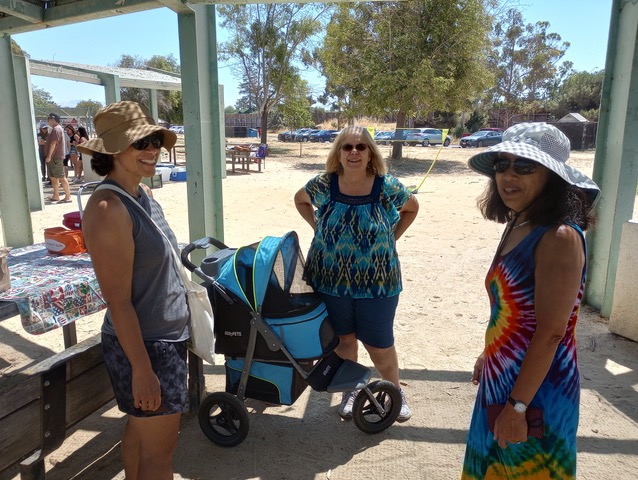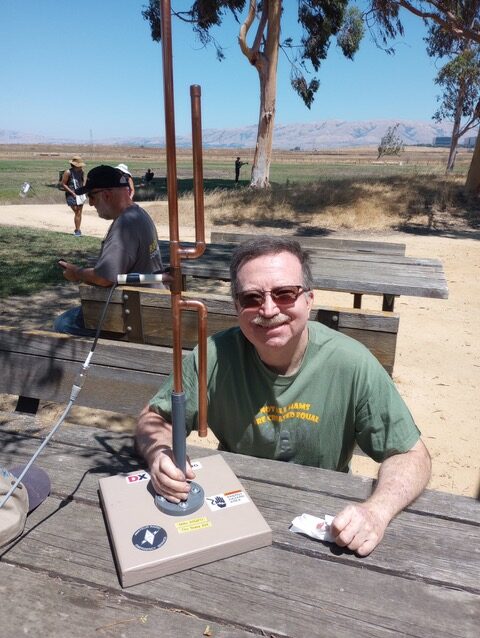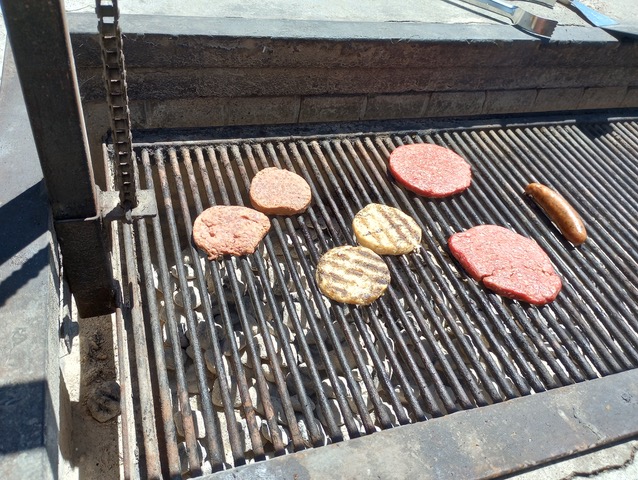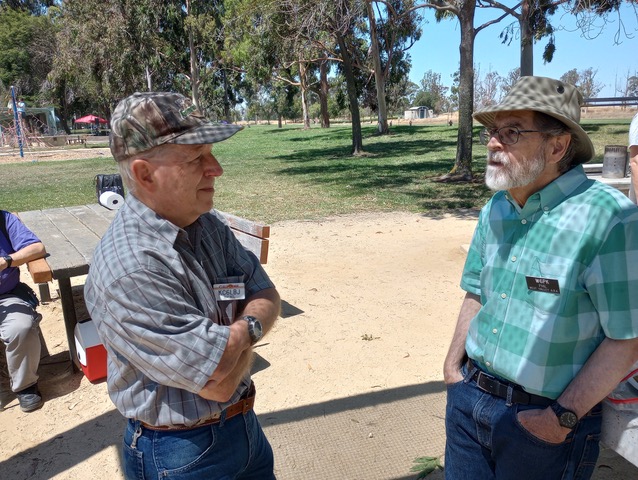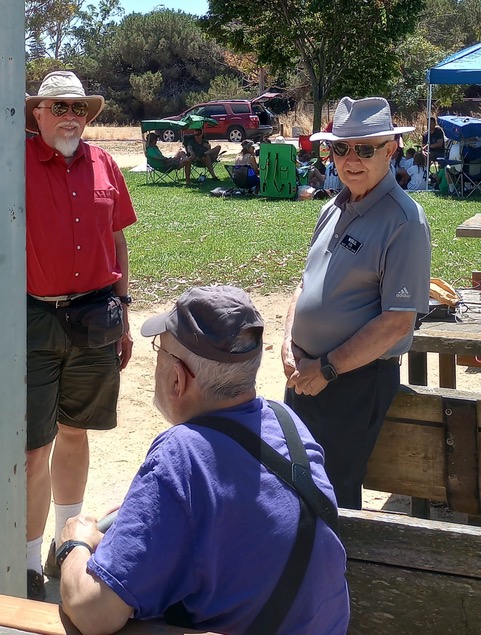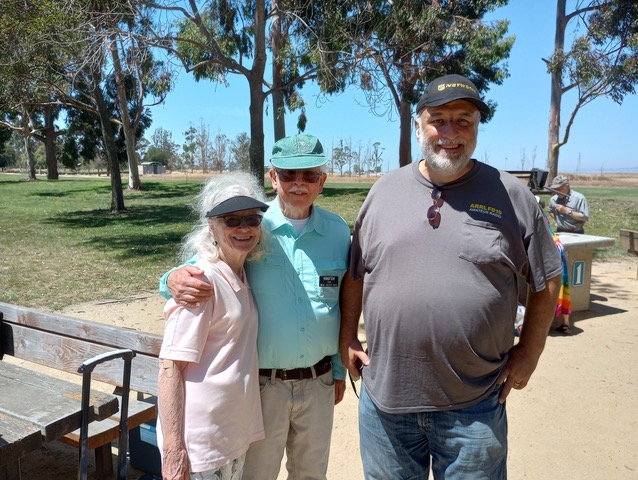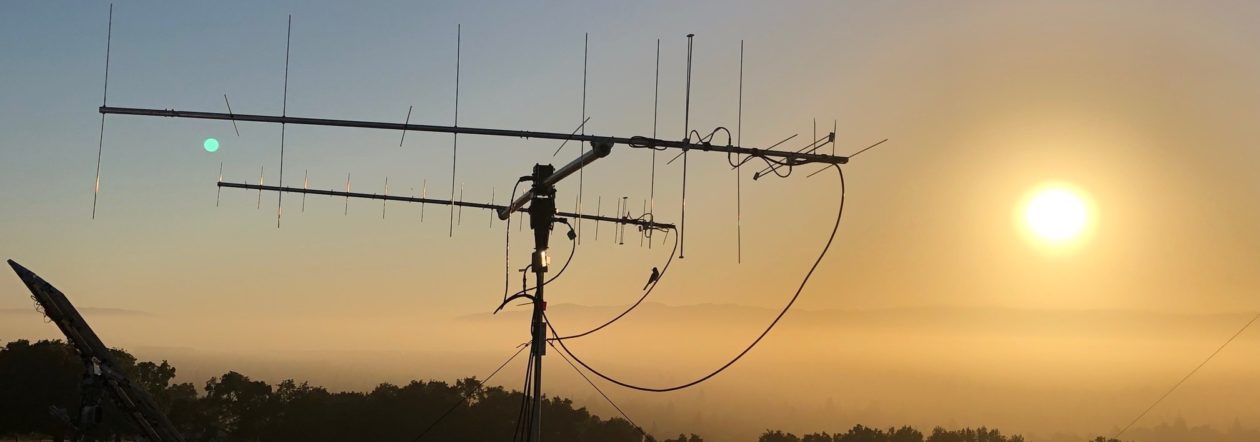Thank you to everyone on our team for an awesome Field Day experience! This year’s WVARA Team members included: W9KKN, N5YJZ, W6IA, K0XI, K9DK, KF6EMB, W6ESL, AD6RY, AK6BY, KK6VF, KB6NTW, KC7XE, NK6FGH, KN6ZMT, K6XM, KZ2V, KC6LBJ, W6VVQ, AJ6PV, W1MVY, WA2CRQ, and K6BBY.
Our projected score of 27,395 is almost 50% higher than last year’s. And for reference, last year our score placed us at #2 out of roughly 5,000 entries nationwide — second only to the East Coast W3AO mega-station. Not shabby!
Here’s a rundown of our contact totals this year per band and mode:
Band Mode QSOs
80 CW 87
80 DIG 81
80 PH 76
40 CW 368
40 DIG 172
40 PH 155
20 CW 558
20 DIG 228
20 PH 227
15 CW 328
15 DIG 165
15 PH 172
10 CW 33
10 DIG 33
10 PH 0
6 DIG 39
6 PH 12
2 PH 61
222 PH 8
420 PH 39
SAT PH 11
GOTA 24
TOTAL QSOs 2,877 (compared to 2,058 QSOs last year)
Total QSO Points* = 4,945
Claimed QSO score = QSO pts x power mult = 4945 x 5 = 24,725
Total Score = Bonus Points + QSO Score = 2,670 + 24,725 = 27,395
* Each CW or Digital QSO is worth 2 QSO points; each Phone QSO is worth one QSO Point.
According to the ARRL’s propagation bulletin, conditions were favorable over Field Day weekend with the exception of a brief period when the planetary K index rose to 5 on Saturday night. The sunspot number on Saturday peaked at 200 (wow!!!) with a solar flux around 160. There was plenty of action on 15 meters, and 20 meters stayed open the entire 24-hours. Sadly, 10 meters band conditions were a bit of a disappointment.
We had a Get-On-The-Air (GOTA) station, three HF CW stations, three HF SSB stations, three HF digital stations, and five VHF/UHF stations including one with satellite link capabilities. Our GOTA station (W6ZZZ) was particularly popular with plenty of drop-in visitors including a good number of kids, and Mark (W6IA) single-handedly netted us eleven satellite contacts.
Being outdoors also meant that we got to put up wild-n-crazy antennas that our spouses and neighbors would never allow back home. Antennas on Mora Hill this year included a pair of 4-band (10/15/20/40) yagi antennas for CW and SSB, and a traditional tribander (with 40m driven element resonator) for the digital tent. SSB, CW, and Digital each had a triplexer which enabled sharing each yagi between multiple transmitters. We also had separate 80m dipoles for each mode. GOTA had a multiband fan dipole and VHF antennas.
In order to minimize interference within our site, we took care to have HF transceivers with well-designed front-ends in order to minimize spur transmissions and receiver pumping/de-sensing. Most of our site’s HF stations used Elecraft or Flex transceivers. We likewise set up most of our antennas in a line pointed at the East Coast, so the side lobe rejection helped reduce interference. Being QRP further helped control cross-mode interference on each band.
Our digital stations benefitted from Bobby K0XI’s van which came with a self-contained 30 foot telescoping mast. In order to minimize interference between the CW and digital stations, we located the digital yagi about 200 feet from the rest of the site. The digital team was able to avoid long runs of coax by installing the digital RF hardware for both of their stations in the van and then running 200 feet of Cat5 Ethernet cable to the main site where the digital tent and the Flex terminals were located.
Be thinking about ideas for how we might improve things next year. And be sure to let us know if you’d be interested in getting involved with our plans for 2024. If you have any thoughts or questions regarding Field Day, you can reach our club via email at CQFieldDay@gmail.com
